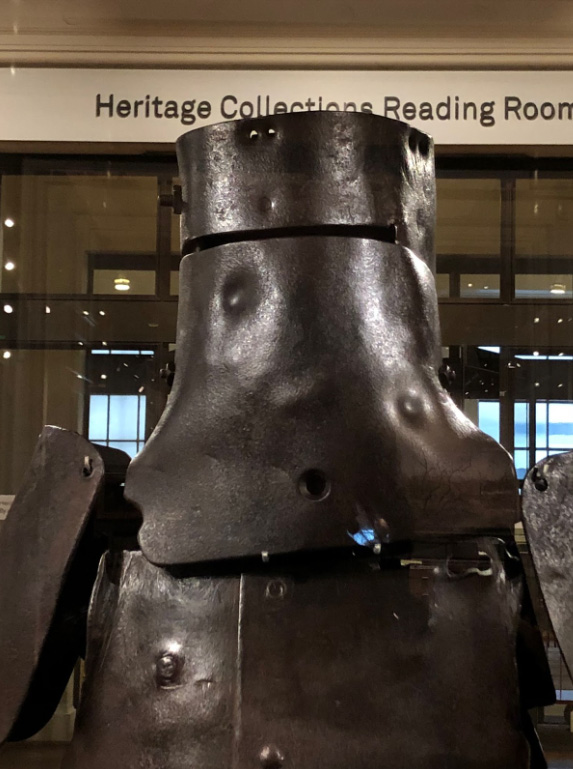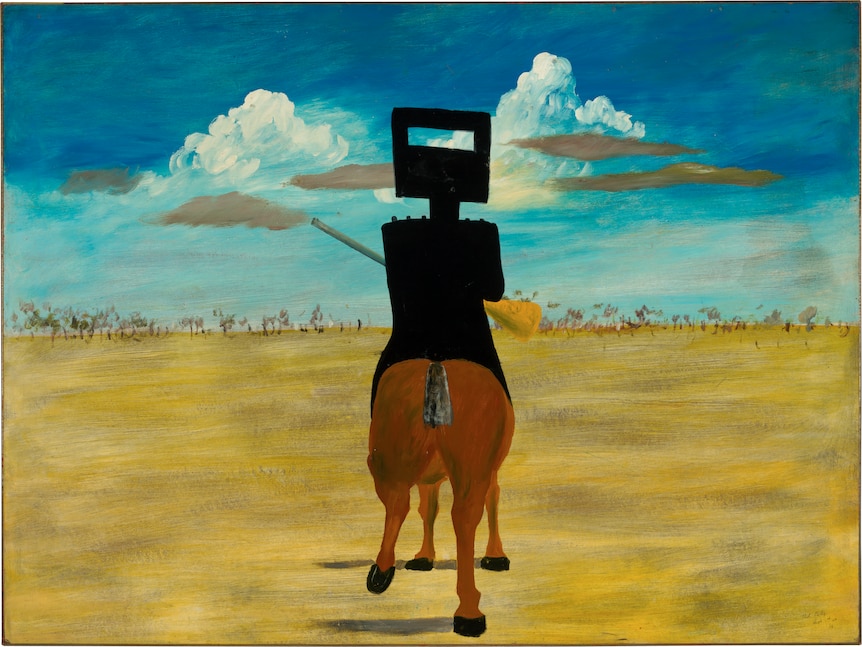Travel Notes 2*
Australia is a country whose history as a modern nation is related to the principle of "no man's land" and the transformation of that territory into the destination for English criminals.
While the penal colonies were closed around 1870, the principle of terra nullius was abolished only thirty years ago in the famous Mabo v. Queensland, initiated by Eddie Koiki Mabo, a member of the Meriam people. Indeed, on May 28, 1992, the Supreme Court recognized the rights of the Meriam, whom it declared traditional owners of the Murray Islands in the Torres Strait. And in doing so, it gave legal status to the fact that indigenous peoples had lived in Australia for thousands of years and had rights to their land under their own laws and customs. Twelve months later, in 1993, the Aboriginal Title Act was passed.
The penal colonies, for their part, had ended long before: the Hougoumont would become the last ship to arrive in Australia loaded with 169 convicts. It docked in Fremantle, Western Australia, on January 9, 1869. In this way, the deportation system did not reach a century: it had begun in 1788 as an option against the loss of the North American colonies, the former destination of prisoners. leftovers from British prisons. In the period known as the "convict era", some 165,000 people were transported and, mainly from 1810, used as a labor force to create the infrastructure of the Australian colonial administration. Without them, without that captive work, the roads, causeways, bridges, courts and hospitals that ruled the life of this enormous island would not have been built. Among them, the establishment of the city of Port Phillip, today known as Melbourne, created in 1837.
Although there was no direct transport of convicts to Port Phillip, convicts were brought to the colony by various means and at various times. David Collin's group, who settled in Sorrento (Mornington Peninsula, 61 km from Melbourne) in 1803, included some 300 male convicts, one of whom, William Buckley, escaped and achieved notoriety as the Wild White Man.
The contingent set up in 1826 at Western Port Bay, west of Melbourne, to deter French interest in the region, included both convicts and soldiers. The convicts were assigned to the Port Phillip District Police Magistrate, to carry out government work. Convicts were also assigned to the early surveyors to assist them in their work.
Many expatriates and some convicts came from the colonies of Van Diemen's Land (now Tasmania) and New South Wales, providing the workforce for the settlers who worked the land. In the 1840s a group of exiles arrived from Tasmania to meet the growing demand for labour, incurring the ire of some free settlers who wanted to keep the colony "pristine" of convicts. Others, however, welcomed the influx as a solution.
In those years, Melbourne promotes the creation of several institutions, including the Public Library, established in 1854, just 20 years after the founding of the city. Today the State Library of Victoria is the oldest in Australia and one of the first free public libraries in the world.
In a story that is repeated throughout the planet, the Library was used to house other institutions. Thus, it housed the continental exhibitions held in Australia and others that are currently known as the National Gallery of Victoria, the Public Record Office of Victoria and the Melbourne Museum.
Ned Kelly's armor description: steel and leather; breastplate: 59.2 x 50 cm., cuirass 57.5 x 55 cm., skirt or lapa: 11-21 (irreg.) x 44.5 cm., helmet and visor: height 33.5 cm. diameter 24.0 cm., left shoulder plate: 28 x 27.5 cm., right shoulder plate: 25.4 x 26.5 cm. It is on display at the Melbourne Library. Photograph: courtesy State Library Victoria. Melbourne, Australia.
The Library had been created as "the people's university", a place of learning and discovery for all Victorians. He was also tasked with collecting items of historical and cultural importance for future generations. Among them, the library houses a collection partially exhibited in a special room in whose center, a glass case contains a rather peculiar object: the armor worn by Ned Kelly (1854-1880), who commanded the gang that devastated the region in the following decades. to the library establishment. The armor shows the bullet wounds that ultimately ended Kelly's career; to it is added a boot and a Snider-Enfield rifle. Letters and documents from and about the gang are displayed on the walls, as well as several panels explaining why the library dedicates a room to a death row inmate. Not only that: historical material includes Ned Kelly's funeral mask, family photographs, police telegrams and photographs, newspaper reports, letters, the minutes of the 1880 Royal Commission on the Kelly case, and books written by authors and historians since the nineteenth century to today.
Likewise, the library compiles testimonies about the cultural impact of Kelly, starting in the 19th century -when he would acquire a place similar to the Argentinean Juan Moreira, and the Brazilian Lampião, Virgulino Ferreira Da Silva, bandit from the northeast murdered in 1938 together with his beloved María Bonita and nine of her lieutenants. Conserved in that set are the 1906, 1970 (starring Mick Jagger) and 2003 (starring Heath Ledger) film versions and the Peter Carey Papers, an archive acquired from the author of the 2001 Booker Prize-winning novel, The True Story of the Kelly gang.
Melbourne Library. Panoramic view of the main room.
The library features Kelly's family as one of many who arrived from Ireland with the father deported as a convict. Thanks to an 1862 law, they were allowed to lease a piece of land near Greta, northeast of Victoria, which turned out to be less fertile than promised. The extended family of the Kellys then dedicated themselves to cattle rustling and, as the panels tell, they suffer from the same kind of contempt that the Irish enjoyed in England. The problems with the police -many of them also Irish- increase, as well as his criminal record.
In 1878, Kelly and his gang ambushed and killed three policemen. In 1879, Ned devised a plan to build bulletproof armor to be worn during firefights. With other members of his gang - Joe Byrne, Steve Hart and his brother Dan Kelly - they made or had suits and helmets made from plow parts, obtained thanks to gifts from their many supporters or simply , stolen. Although it is not known for sure how they were built, they were probably shaped by heating each sheet in a forge fueled with firewood from the bushes that characterize the Australian flora. Although they may have had the help of friendly blacksmiths. The suits successfully repelled bullets, but their weight made them uncomfortable and the gang was unsure of their usefulness.
There are two main theories as to where the inspiration for the armor's design came from. One suggests that performers in Chinese armor had been seen during a carnival parade through the streets of Beechworth in 1873. The gang also had a network of Chinese sympathizers, and Byrne, who grew up near Chinese camps in the mines of gold, he was fluent in Cantonese. The other theory proposes that Ned got it from his favorite book, Lorna Doone (1869) by R. D. Blackmore. Set in 17th-century England, the novel is about a family of outlaws, whom it describes on horseback wearing "iron plates on their chests and on their heads." Another, on the other hand, postulates that Ned saw and drew armor during a visit to the Melbourne Museum, further proof that libraries, museums and exhibitions are not always what they say. public of the tavern that may lead him to crime "- said Francisco Pascasio Moreno around 1890 to defend the existence of the General Museum of the city, the one where he had installed the collections of the province. It is noted that, at that time, he did not know the history of Ned Kelly or that he preferred to ignore that museums, books, catechist speeches acquire the power that those who use them feel like, but not necessarily the one that is intended by their promoters or authors.
Be that as it may, the gang resorted to armor in a plot to ambush a police train in June 1880 at Glenrowan, a failure that led to their deaths. After taking hostages, the group barricaded themselves in a local hotel and used the armor during a shootout with police. Byrne was killed by a stray bullet that struck his groin through a small gap in his suit, and in an attempt to rescue Dan and Hart, Ned donned the suit during a fifteen-minute exchange of gunfire. Although the armor protected his head and torso, he received multiple gunshot wounds to his hands and legs, causing significant blood loss and ultimately capturing him. Hart and Dan died during the last phases of the siege, possibly in a suicide pact. Ned was tried, found guilty, and sentenced to death by hanging.
The police reported that the armor was made from plowshares, a report that was ridiculed, disputed, and deemed impossible, even by the blacksmiths. There was much discussion about whether to destroy it, but the four disassembled suits were eventually stored in Melbourne, where they ended up in private and public hands. Within a few days of the band's disappearance, the armor began to disperse and mix, a fate shared by everything that becomes the object of desire in a collection, to the point that no one could be sure which pieces belonged to which suit. . Today it is known that the one in the Library is Ned's armor, discarded from the Melbourne museum because one of his directors could not explain why they had it. Two other armors - those of Dan Kelly and Steve Hart - are in the Police Museum of Victoria.
Following the gang's capture, news of the armor caused a sensation throughout Australia and much of the world. The band was admired in military circles and Arthur Conan Doyle referred to the Kellys' imagination, recommending the use of similar armor for British infantry. Today it has become a widely recognizable image, inspiring many cultural representations and establishing Ned Kelly as one of Australia's most celebrated historical figures.
School visit to the “Ned Kelly” ensemble made up of the works of Sidney Nolan donated in 1977 to the National Gallery of Australia, Canberra. Photography: Irina Podgorny.
An antihero who is worshiped like heroes because, after all, with other content, it is still the same. A protagonist of early Australian silent films, replete with bandits and wild eucalyptus forests. Of novels, of new movies. And above all, from the series that the Australian artist Sidney Nolan (1917-1992) dedicated to Ned's life in 1948, a work that, far from being a literal illustration of the story, appears as a meditation on the circumstances of Ned's life. Nolan himself, post-war and how one person's actions can "change the world." Some of the paintings were the reflection of that world of violence, a series that intertwines biography and autobiography where the empty landscape is illuminated by a disturbing light coming from the horizon. Many of the pictures refer to major events in the gang's history: the shooting by police officers at Stringybark Creek, the subsequent police chase, the activities of police spy Aaron Sherrit, the Glenrowan hotel siege and the trial that ended with the sentence to hang. 27 paintings whose main ingredients, according to Nolan, were "Kelly's own words, and Henri Rousseau, and sunlight." European art under the southern cross, the same one that dazzled the convicts when, finally, after A terrifying journey, they left their cells and found the land that, if all went well, would redeem them from the criminal record that had sent them to the other side of the world.
* Written at the Australian National University, Canberra, Australia. Special for Hilario. Arts Letters Crafts.

